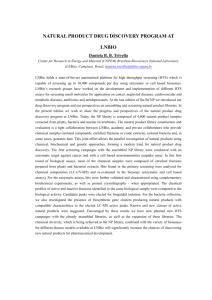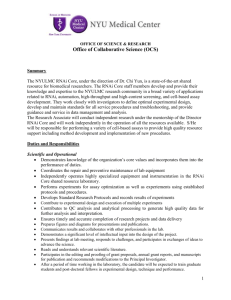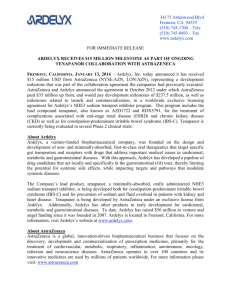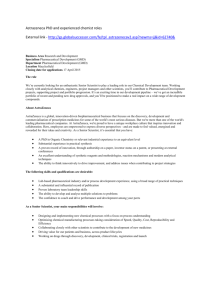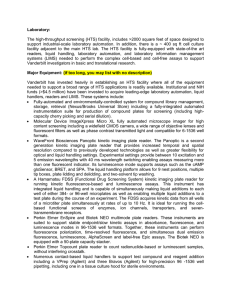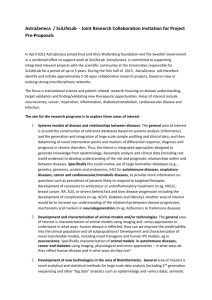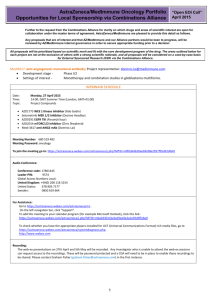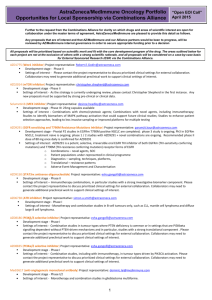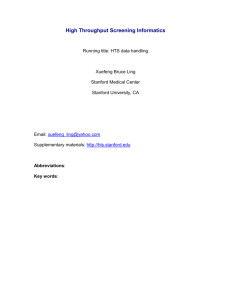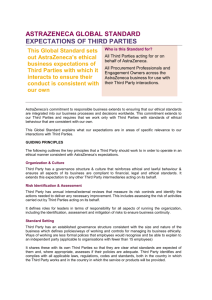Instructions to Authors - AstraZeneca | Open Innovation
advertisement
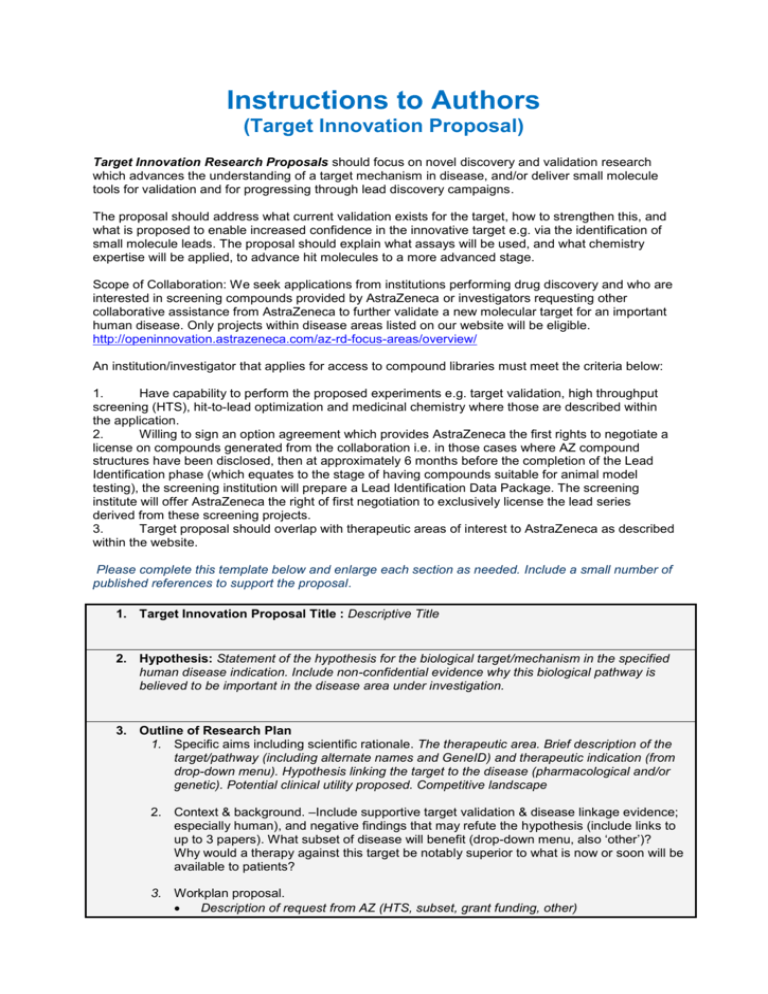
Instructions to Authors (Target Innovation Proposal) Target Innovation Research Proposals should focus on novel discovery and validation research which advances the understanding of a target mechanism in disease, and/or deliver small molecule tools for validation and for progressing through lead discovery campaigns. The proposal should address what current validation exists for the target, how to strengthen this, and what is proposed to enable increased confidence in the innovative target e.g. via the identification of small molecule leads. The proposal should explain what assays will be used, and what chemistry expertise will be applied, to advance hit molecules to a more advanced stage. Scope of Collaboration: We seek applications from institutions performing drug discovery and who are interested in screening compounds provided by AstraZeneca or investigators requesting other collaborative assistance from AstraZeneca to further validate a new molecular target for an important human disease. Only projects within disease areas listed on our website will be eligible. http://openinnovation.astrazeneca.com/az-rd-focus-areas/overview/ An institution/investigator that applies for access to compound libraries must meet the criteria below: 1. Have capability to perform the proposed experiments e.g. target validation, high throughput screening (HTS), hit-to-lead optimization and medicinal chemistry where those are described within the application. 2. Willing to sign an option agreement which provides AstraZeneca the first rights to negotiate a license on compounds generated from the collaboration i.e. in those cases where AZ compound structures have been disclosed, then at approximately 6 months before the completion of the Lead Identification phase (which equates to the stage of having compounds suitable for animal model testing), the screening institution will prepare a Lead Identification Data Package. The screening institute will offer AstraZeneca the right of first negotiation to exclusively license the lead series derived from these screening projects. 3. Target proposal should overlap with therapeutic areas of interest to AstraZeneca as described within the website. Please complete this template below and enlarge each section as needed. Include a small number of published references to support the proposal. 1. Target Innovation Proposal Title : Descriptive Title 2. Hypothesis: Statement of the hypothesis for the biological target/mechanism in the specified human disease indication. Include non-confidential evidence why this biological pathway is believed to be important in the disease area under investigation. 3. Outline of Research Plan 1. Specific aims including scientific rationale. The therapeutic area. Brief description of the target/pathway (including alternate names and GeneID) and therapeutic indication (from drop-down menu). Hypothesis linking the target to the disease (pharmacological and/or genetic). Potential clinical utility proposed. Competitive landscape 2. Context & background. –Include supportive target validation & disease linkage evidence; especially human), and negative findings that may refute the hypothesis (include links to up to 3 papers). What subset of disease will benefit (drop-down menu, also ‘other’)? Why would a therapy against this target be notably superior to what is now or soon will be available to patients? 3. Workplan proposal. Description of request from AZ (HTS, subset, grant funding, other) For Screening Proposals: Currently available tool compounds for the target. Funding support for screen and hit follow-up. Overview of the experimental plans including rationale for choice of assays and endpoints for target validation & compound screening, description of how hits would be triaged, use of selectivity assays and assays demonstrating mechanism of action and target linkage to disease phenotype, and plans for chemistry optimization of series. What compound library do you wish to screen (diversity, phenotypic, or fragment) and why. High Throughput Screening Readiness o HTS assay description o Characterization o Pilot screening data, if available Plans for Hit confirmation/validation once hits are obtained Drug discovery screening flow chart Facilities description: o Ability to conduct HTS o Ability to conduct Structure Activity Relationship (SAR) studies on the hit For in vitro cell assays, provide details on any cell lines that will be used. Please include a clear strategy that demonstrates how you will progress from target idea to validated target with lead molecules. For Grant Funding Requests for Target Validation - A grant funding request should clearly state what target validation experiments will be performed using this funding, and how the funding will be allocated and spent. Should include full cost including any institutional overhead. - It is preferred that funding should be for 6 month-2 year period, though up to 3 years will be considered by exception. 4. Proposed next steps to further advance your project i.e. beyond initial experiments. Include approximate timelines for completing this workplan. Demonstration where required of your current or anticipated source of funding. 4. Operational feasibility What you consider to be innovative about your proposal (target linkage to disease, mechanism of modulation of target, novel assays, chemistry etc). What has been established already? By you or members of your team? What hasn’t? [Note: Innovative, ‘never tried before’ approaches are welcome but will require supporting evidence] 5. Capabilities of the investigator(s), their labs, institutions, collaborators Biosketch of Investigators Current other external support 6. Contact details for Technology Transfer Office Name Address Email Note: Only non-confidential information should be included in the Research Proposal. If confidential data exists that would strengthen the rationale or other aspects of the proposal, the author can/should emphasize that a statement is supported by confidential information the author is able to share, but only under a Confidential Disclosure Agreement (CDA). If AstraZeneca finds the non-confidential Concept Proposal sufficiently intriguing, execution of a CDA so that information can be considered will be discussed. We request that you supply in your application the name and contact details of your Technology Transfer Office person. Preferably this is the individual whom you have already discussed your submission with. Upon acceptance of your proposal, the contract can then be sent directly to this individual as well as to the submitter. During the submission process, additional details regarding any use of primary tissue would be requested as with respect to the proposal.
